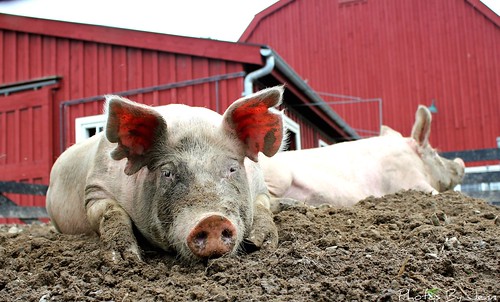I love the word wallow. It’s fun to say, plus it reminds me of two totally separate things: self-pity, and pigs in mud. I don’t know that I’ve ever heard the phrase used without one of those two things attached!
Except, I often use the phrase at work in a way that is counter to its usual definition and negative connotation.
Something that we parents don’t generally do often or well is to connect with our children when they are having upset or uncomfortable emotions. Instead, we try to distract or minimize or rationalize or joke or extinguish those emotions. We do it for many different reasons, perhaps because the expression is ill-timed or inappropriate in size, or because their upset is about us and we feel defensive, or because it’s about something we can’t control and we feel helpless. But for whatever reason, we often entirely skip the step where we reflect and validate our children’s emotions. Emotionally healthy parenting requires that we give our children permission to feel their feelings, even tough feelings. Furthermore, our children need to feel connected to us even when they are feeling angry or resentful or worried or freaked out. (*)
So I use the word wallow. I don’t actually want parents to wallow in their children’s emotional states, but because we tend to err on the side of minimizing those emotions, I use a word that guides us towards the other side of the continuum.
When your child is upset or angry or worried, take a deep breath. Mentally remind yourself that you want them to know that they have your permission to feel those feelings. (This will help them internalize, for life, the important lesson that they have a right to their feelings.) Reflect to your child that you see how they are feeling. That can be done simply by saying something like: “wow, I can tell you are really feeling ___ .” Take it a step further (and borrow a page from Imago couples therapists) and validate their feelings: “It makes sense to me that you would feel upset about that. If I were in your position, I’d probably feel the same way.”
And then maybe take another deep breath. Let a little space come in to the room and in to your interaction. This is where the ‘wallowing’ happens. Just stay in that space for a moment: stay in the space of having given your child permission to feel those feelings. Let your child soak that in. Don’t rush too quickly to distract or redirect. Offering a hug, caring eye contact, or a loving touch might feel good to them right now. This all serves to help them feel less agitated, less out of control, less overwhelmed by those feelings, and often has the very appealing effect of reducing the upset. When your child has felt “heard” and even validated, it will be much easier to get them to ‘hear’ you and your perspective.
Important note: saying “I can tell that you feel mad that I am making you unload the dishwasher, and it makes perfect sense to me that you would really rather play than do chores” does NOT mean that my daughter can go back to playing and skip the chore. The limits/requests/expectations remain the same. All that’s different is that I am giving her permission to feel whatever she feels about those expectations. But, it’s an amazing, healthy, effective, loving difference. And, by the way, one of the long term payoffs is a much higher-quality relationship when your child is an adult.
Experiment with it if you are so inclined: see if you can find a place this week to give your child permission to feel their upset, angry, jealous, agitated, or anxious feelings. See what happens and how it feels to both you and your child. Good things can happen!
(*) I can’t find a citation for it, but I was taught once that the Talaris Institute studied this and found that responding in an emotionally responsive/healthy way just 30% of the time is enough to get the benefit. Yay for not needing to be perfect!

